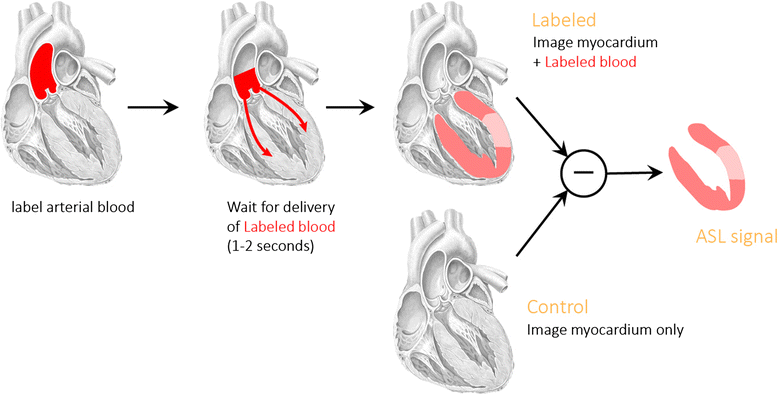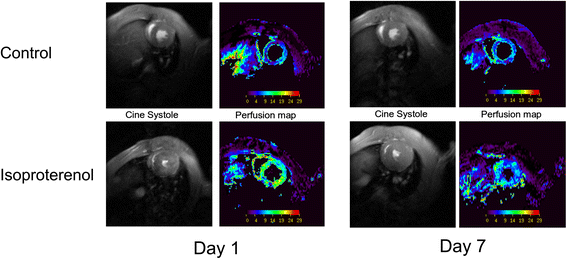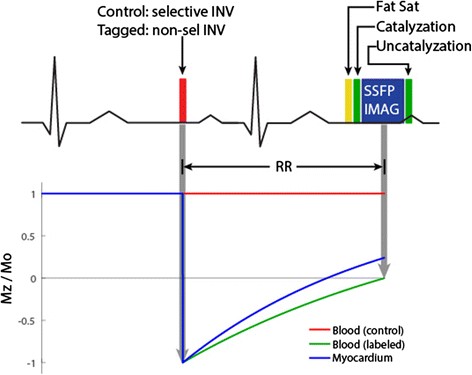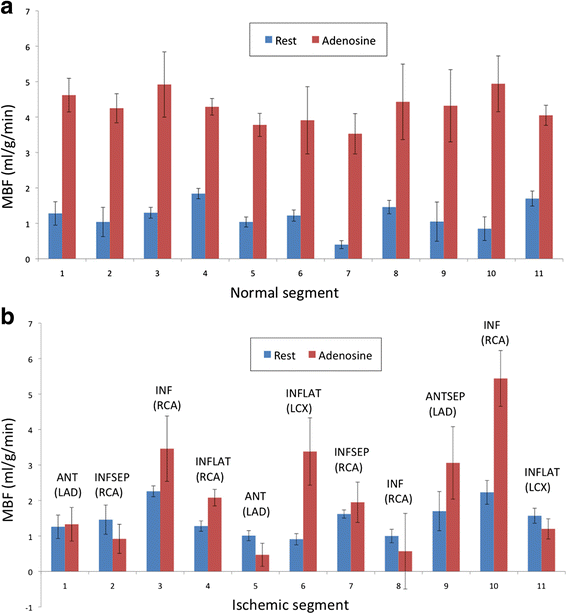Myocardial arterial spin labeling
- PMID: 27071861
- PMCID: PMC4830031
- DOI: 10.1186/s12968-016-0235-4
Myocardial arterial spin labeling
Abstract
Arterial spin labeling (ASL) is a cardiovascular magnetic resonance (CMR) technique for mapping regional myocardial blood flow. It does not require any contrast agents, is compatible with stress testing, and can be performed repeatedly or even continuously. ASL-CMR has been performed with great success in small-animals, but sensitivity to date has been poor in large animals and humans and remains an active area of research. This review paper summarizes the development of ASL-CMR techniques, current state-of-the-art imaging methods, the latest findings from pre-clinical and clinical studies, and future directions. We also explain how successful developments in brain ASL and small-animal ASL-CMR have helped to inform developments in large animal and human ASL-CMR.
Keywords: Arterial spin labeling; Cardiovascular magnetic resonance; Ischemic heart disease; Myocardial perfusion.
Figures









References
-
- Klocke FJ, Baird MG, Lorell BH, Bateman TM, Messer JV, Berman DS, O’Gara PT, Carabello BA, Russell RO, Cerqueira MD, St John Sutton MG, DeMaria AN, Udelson JE, Kennedy JW, Verani MS,Williams KA, Antman EM, Smith SC, Alpert JS, Gregoratos G, Anderson JL, Hiratzka LF, Faxon DP,Hunt SA, Fuster V, Jacobs AK, Gibbons RJ, Russell RO, American College of Cardiology, American Heart Association, et al. ACC/AHA/ASNC guidelines for the clinical use of cardiac radionuclide imaging--executive summary: a report of the American College of Cardiology/American Heart Association Task Force on Practice Guidelines (ACC/AHA/ASNC Committee to Revise the 1995 Guidelines for the Clinical Use of Cardiac Radionuclide Imaging). J Am Coll Cardiol. 2003;42:1318–33. - PubMed
-
- Ragosta M, Bishop AH, Lipson LC, Watson DD, Gimple LW, Sarembock IJ, Powers ER. Comparison between angiography and fractional flow reserve versus single-photon emission computed tomographic myocardial perfusion imaging for determining lesion significance in patients with multivessel coronary disease. Am J Cardiol. 2007;99:896–902. doi: 10.1016/j.amjcard.2006.11.035. - DOI - PubMed
Publication types
MeSH terms
Substances
LinkOut - more resources
Full Text Sources
Other Literature Sources
Medical

